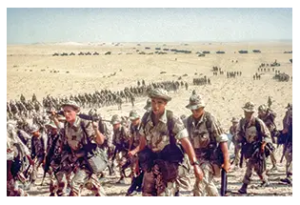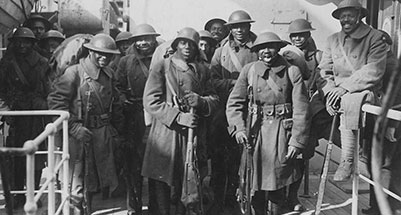 The origins of Gulf War illness have eluded veterans and medical researchers for decades. But now, a new study seems to have cracked the case on how roughly 250,000 veterans were sickened during the 1991 Persian Gulf War: exposure to the chemical weapon sarin.
The origins of Gulf War illness have eluded veterans and medical researchers for decades. But now, a new study seems to have cracked the case on how roughly 250,000 veterans were sickened during the 1991 Persian Gulf War: exposure to the chemical weapon sarin.
While combat lasted 43 days, the harmful health effects on some who served in the conflict have stretched for decades. Known as a cluster of once inexplicable symptoms, Gulf War illness —sometimes called Gulf War syndrome— can include muscle aches, joint pain, dizziness, memory lapses, headaches, fatigue and insomnia.
For more than 30 years, federal efforts have come up short in deciphering the root causes of these puzzling symptoms. To help solve the mystery, a team of researchers at the University of Texas Southwestern Medical School looked at the genes and surveys of those affected.
“Quite simply, our findings prove that Gulf War illness was caused by sarin, which was released when we bombed Iraqi chemical weapons storage and production facilities,” said Dr. Robert Haley, the study’s lead author and director of epidemiology in the internal medicine department at UT Southwestern.
“There are still more than 100,000 Gulf War veterans who are not getting help for this illness, and our hope is that these findings will accelerate the search for better treatment.”
The researchers included 1,016 veterans of the Persian Gulf War—about half of whom have Gulf War illness. They also tested for a pair of gene variants, one of which efficiently breaks down sarin and one that processes some pesticides but not sarin. Different combinations of these gene types can have varying impacts on developing Gulf War illness.
The study found that those with the least protective genotype, and who heard chemical alarms during the war, were nearly nine times more likely to develop symptoms.
Sarin was not only stored in Saddam Hussein’s Iraq but also used on the country’s citizens. In 1988, as the Iran–Iraq War was drawing to a close, Iraqi Kurds in Halabja, an Iraqi town about 9 miles from Iran, were targeted with a mixture of chemical weapons, one of which was sarin.
Armed with the knowledge of past use, American and coalition forces sought to eliminate the likelihood of sarin being deployed against them. However, little did they know it would result in American troops being unknowingly exposed to toxic substances once again.
“As is common with toxic exposures, we may not have immediate answers as to why groups of veterans develop certain symptoms or illnesses,” said National Commander Joe Parsetich. “But there is still a need to care for those who were made ill in service and to continue pressing for research that will help us better understand those connections.”






